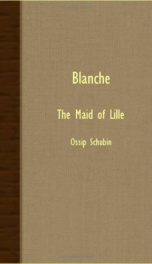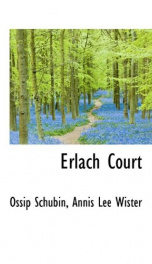blanche the maid of lille

INTRODUCTION A FEW years since we chose to spend the summer in a chalet among the Dolomites of South Tyrol. Weird, fantastic, inaccessible, mysterious, gro- tesque, and yet often wearing a jewelled crown of eternal ice, these peaks soared into the ether above and around us. Nothing, says a recent traveller, can surpass the majesty and beauty of the towers and ramparts, the battlemented walls, impregnable castles, and gracefully pinnacled cathedrals into the forms of which their summits are built up. Their colouring is another striking characteristic many of them rivet the eye with the richness of the tints, deep reds, bright yellows, sil- very whites, and the dark blues and blacks of the rocks. But all these colours are modified and softened by a peculiar grayish white tint. The mountains look as if powdered over with some substance less hard and cold than newly fallen snow. Although within a days drive of Pieve di Cadore, Titians birthplace and not far from Cortina, we could hardly have found a more isolated spot. It was a hermitage, and we knew lit- erally miles. no one within hundreds of Ossip Schubin, the popular German novelist at that time, had sent us a volume of stories, with the request that we would translate them. We selected the story now offered as being most in sympathy with our romantic surround- ings. A learned Englishman has said, If histories were written as histories should be, boys and girls would cry them. But alas how to read is the spirit, the tone, of a dead century to be made to breathe again and report itself The landscape alone is permanent new fig- ures constantly fill the foreground. Poetry, legend, myths, help us to divine some of the strange chords in the human chant, which, heavily burdened with sorrow, come down to us through the ages. In this twentieth century no one sentiment or emotion is allowed so far to dominate as to crush out all others. But how was it in the days of the Crusaders, of the Minnesingers, of the Troubadours If we would realise the seclusion, the loneliness of many lives centuries ago, we have only to enter either The Wartburg or the castle of Solmes Brauenfels in the Rhine valley, which dates back a thou- sand years. Look into the gloomy keeps hear the shrieking of the bars in the heavy portcullis gaze down into the damp, ugly moats or listen to the soughing of the stormy winds in the branches of the tall forest trees which closely environ these grim abodes. It is conceivable that Elizabeth languished and died at The Wartburg, when the chivalrous Tannhauser no longer came to inspire with love and song. Could even Martin Luther have lived in these cold, black walls without his work which daily rekindled his soul as he studied the of the Bible inspired pages the annals of a wicked old Among past, this story appears as a legend dimly connected with the pathetic face of the Maid of Lille a copy of which is in the Boston Art Museum. There is no appeal here to the modern girl. The word altruism 9
Users who have this book
Users who want this book
What readers are saying
What do you think? Write your own comment on this book!
write a commentif you like blanche the maid of lille try:
Other books by this author
Do you want to read a book that interests you? It’s EASY!
Create an account and send a request for reading to other users on the Webpage of the book!



